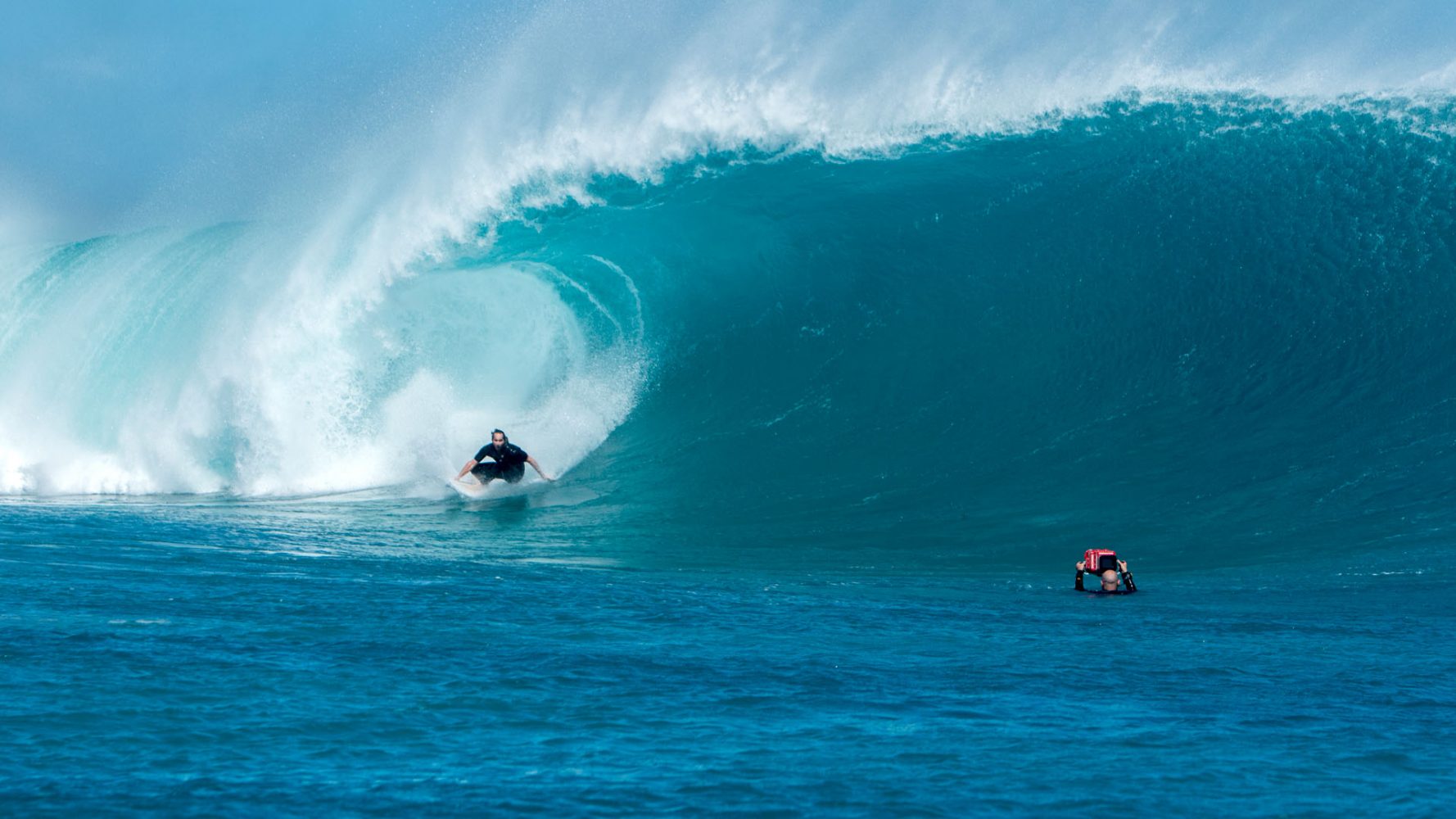
Life as a Surf Cinematographer
Meet Rick Rifici, the award winning Director of Water Photography for feature film Breath.
When Rick Rifici enters the ocean, it is usually with only a camera and a single pair of fins.
Epic swells and 18 kilograms of gear that can turn into a deadly “ball and chain” apparatus doesn’t deter Rifici from his action-packed profession.
“You’ve got nothing in the water – you just rely on yourself and your own capabilities,” he says.
Sought-after globally as a Water Cinematographer and Director of Water Photography, Rifici’s 30 year career has taken him to virtually every surf break that counts in the world. These include Tahiti, Fiji, Bali, Hawaii, Spain, Tonga, Portugal, New Zealand, Nova Scotia and Australia’s South West.
More recently, Rifici won the Film Critics’ Circle of Australia award for Best Cinematography and also received an AACTA Nomination for feature film Breath, produced by Simon Baker.
“Nothing really ends up the way you visualise it in your head. You don’t often get identical. Often it’s better than you visualised.” Rifici says of the reels of mind-blowing ocean and surf footage he has captured over the years.
In contrast to capturing surfing, water cinematography for cinema creates a different set of challenges for scheduling, as the environmental conditions are always unknown.
He recalls shooting a scene for Breath where the lead characters are on a boat to go surfing. It was a technical shot with a boat anchored, lines to deliver and waves to be surfed, all shot minimal frames. Half a day had been allowed to film the scene, which the production crew hoped (nervously) would suffice.
As it happened, a perfect set of waves rolled in during the first few minutes after they had anchored the boat. The actors decided to go, and the shot was achieved in mere minutes.
“It’s about not missing anything, putting yourself in the right position. It’s such a unique environment – so challenging is mother nature,” Rifici continues.
In the digital world, checking footage as you go has become almost a mainstay in production. In contrast, surf cinematography is instantaneous. There’s no second chance. It takes the craft of capturing motion back to the fundamentals.
“It’s a bit like the olden days when you shot traditional film and had to wait… you shoot so much concentrating on aperture and focus and positioning yourself. You don’t really know what you’ve got until you come back and look at it.”
He says the magic moments come in the juxtaposition between the textures of the water, the sky and the surfing action which is evident in his captivating style.
While many of his missions are fraught with danger, Rifici is drawn to the challenge.
“There was one time in Sydney, I was on a big wave event and the biggest storm to hit Sydney in the history of the contest, unleashed right near a cliff face. I got bucked off a jet ski just before the contest started. Because it was such a big storm, the jet skis and boat ramps were being washed away and I had life vest on, so I couldn’t get under the waves.”
“You’ve just got to get back on. It’s the fun of it – I just love the ocean. It’s a hard thing to beat. It’s so refreshing.”
He says it’s the excitement and thrill of capturing the ocean and adventure so few people witness in real life makes his profession so motivating.
“I love making stories and sharing them with people,” he explains.
In terms of shooting to a brief, Rifici says preparation is imperative, both physically and mentally.
“Fitness comes into a fair bit. Also being psychologically fit. There’s not much you can do with big waves so it’s important to have good training, to eat well,” he says.
“You only get one opportunity to capture it. There’s nothing more disappointing than missing something so you want to be prepared.”
Most recently, Rifici has been off chasing mysterious SLAB waves, a rare type of swell that may only comes once or twice a year to Australia’s south west. Breaking on rocks or reef, SLAB waves are unique in that the top of the wave is actually the ocean and the barrel of the wave is below sea level. Watch this space!



